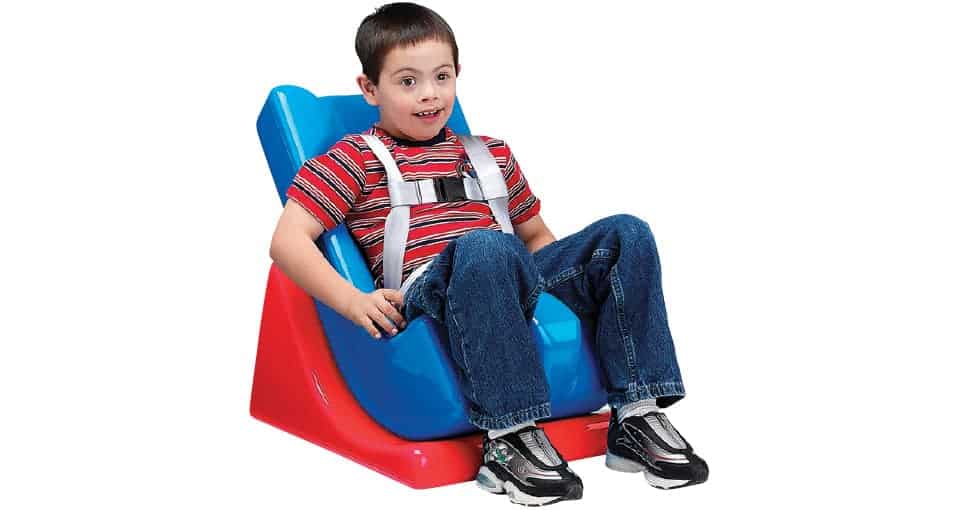If you take a look at someone walking, what you may not realize is that our ability to move is comprised of two parts: a static phase: stance (the ability to balance and hold a position) and swing through (mobility or movement). It is both these phases, the ability to hold a position and the ability to move, that allow us the freedom to explore, learn, participate, socialize, and engage. For those with different neurological orientations, position and/or mobility can be challenged and may require adaptive equipment, therapy or assistance.
Positioning
Our position or posture is the way we present ourselves to the outside world. A good posture gives us firm footing and the ability to be still and stable and not fall over. Having a good posture means good alignment, strong bones, and muscles. Our bones give us structure and our muscles hold the structure in place. Some children may have difficulty with positioning due to low tone or high tone. That is the resistance in their muscles and it may create a more-than-normal pull or less-than-normal pull. In such cases, we can use equipment, bolsters, and cushions to assist with positioning.
Seating
The ideal seated position is one in which the shoulders are directly over the hips and the hips, knees and ankles are bent to 90 degrees. In addition, this means that the pelvis is in neutral. Students with trunk stability and/or muscle tone variations may need an adaptive seat to achieve this position. For others who have sensory needs that require an active seated position to help with alertness may benefit from a wedge cushion or therapy ball which tips the pelvis slightly forward (anterior pelvic tilt) and allows for some movement while seated. For supported seating during circle time or floor activities , using a FluffChairs, HowdaHug or Feeder Seat may be good alternatives.
Standing
When standing, we look to see that the ears, shoulders, hips, knees and ankles are all in alignment. Using an ergonomic mat may help to make standing more comfortable. Some students prefer standing to sitting for long periods of time. In such cases, a standing desk with a swing foot bar for fidgeting may be a good match. For those with limited mobility that need alternate positioning options from a wheelchair during the school day a sit-to-stand or a mobile stander may be recommended by the Physical Therapist.

Mobility
Mobility is how we gain access to world around us. Being mobile allows us to go places, interact with others, learn and see new things. In order to be mobile, we must have good balance, good muscle control and an awareness of where our body is in space as it’s moving. We also must have good vestibular orientation as we move through different planes of motion. We can also be mobile by using wheels! When working with children we look closely to be sure that they are mobile in regards to walking, running, jumping and climbing. Yet we also can use items like scooters, ramps, stairs, roller skates and bicycles to challenge both balance and vestibular skills. Such activities, when practiced safely cannot only challenge our balance reactions and muscle strength but they can also encourage our overall well-being. For children with more challenging motor impairments, an adaptive trike can be a wheeled option that promotes inclusion. Safety should always be taught before mobility skills are learned.
If you are experiencing challenges with developmental skills such as walking, jumping, sports or daily skills, you may want to seek the expertise of a professional physical therapist who can assess and treat to improve positioning and mobility.








Leave a Reply